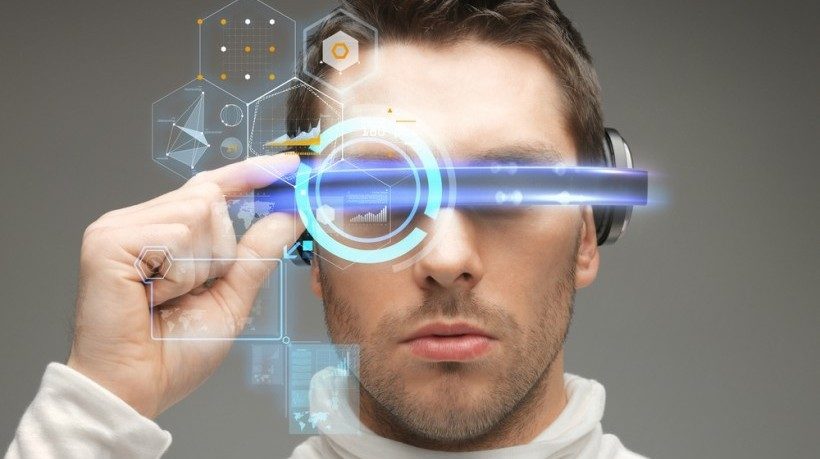What Are The Practical Implications Of Virtual Reality For eLearning?
The level of immersion that virtual reality provides for its user is the reason that virtual reality has a lot of potential for eLearning. By immersing learners in their learning experience, the hope is that those learners will become fully engaged with the learning material.
Engagement is often seen as the “Holy Grail” of eLearning: If a learner is engaged with the learning material, then she/he is interested and invested in it, seeks to understand it, and will try hard to do well. Engaging eLearning is effective eLearning, and so if virtual reality can provide engaging learning, then it can be an excellent next step for eLearning.
“I hear and I forget. I see and I remember. I do and I understand.” - Confucius
What Is Virtual Reality?
Virtual Reality is the term for a three-dimensional, computer generated environment which can be explored and interacted with by a person. The more somebody feels like they are inside, or part of, a 3D computer generated environment, the more they are immersed in that virtual world.
Computer games therefore qualify as virtual reality, although they provide little immersion. What more readily springs to mind when we think of virtual reality is someone wearing some headgear, such as the Oculus Rift, to provide them with visual and auditory immersion; partial immersion in their virtual reality. Complete (or at least almost complete) immersion is also possible using a Computer Automated Virtual Environment, which is essentially a room with floors and walls made of screens displaying 3D images.
Benefits Of Virtual Reality To Current Learning Environments
Virtual Reality can enhance current eLearning by making it 3D and interactive. Rather than a group of learners all looking at 2D images of course-content on an interactive whiteboard, they can experience the content of this lesson as occupying space in their classroom and thereby become immersed in learning.
In a virtual reality math lesson, the variables of a sum are no longer images on a screen with which a learner’s interaction is mediated by the use of a mouse or calling out to a teacher. Instead, they are physical things which are immediately presented to learners and with which they can directly interact. For example, a learner can manipulate the sum by moving the variables with their hands, doing so until they have found the correct arrangement of variables to solve the sum. This enables kinaesthetic learning – learning by doing. We all to a certain extent learn kinaesthetically, and this is the primary mode of learning for 5-20% of the population.
By enabling learners to directly interact with their learning materials, virtual reality makes courses immersive and entertaining, thereby increasing engagement and motivation to learn, and also appeals to different types of learners in a way that standard eLearning does not.
Benefits Of Virtual Reality To Potential Learning Environments
Virtual worlds are physically risk free. If when you are learning virtually you spill some virtual hazardous waste, crash a virtual lorry or blow up a virtual building then there is no real consequence. When learning via virtual reality, then, learners can do things which are not possible (or practical) in the real world. This means that new types of learning environments become available: you can take a course which involves working in dangerous or high-risk scenarios, such as working with hazardous waste, working in an operating theatre, or even learning how to dispose of a bomb.
There are already some examples of this, such as flight simulators which enable would-be pilots to learn how to fly a commercial plane without the possibility of endangering the passengers!
Not only can virtual reality make these courses possible, but learners can experience the (virtual) consequences of their actions, and learn from their mistakes in a way that is not possible with real-world learning. Learners can therefore become emotionally invested in the learning experience and so the rewards of success, and the incentives to avoid failure, become tangible, and the overall learning experience is enhanced. Learning from mistakes also means that experiments in high-risk scenarios can be carried out, and previously unavailable innovation can occur.
The Reality
However, despite the recent surge of popularity for virtual reality, it is still a possibility rather than a reality, particularly when we are thinking of implementing virtual reality at a consumer rather than a developer level. The costs and implications of implementing virtual reality in more than a minority of learning situations also seem unfeasible. This, however, does not detract from the potential benefits of virtual reality to eLearning.
We have seen how virtual reality can change current learning environments in to exciting, fun, sociable environments in which learner engagement, understanding, motivation and interaction is vastly increased through immersion in learning. We have also seen how virtual reality enables us to create previously impossible learning environments and thereby explore previously unavailable topics, in which people can learn from failure and make innovations which will hugely benefit them and others in real-life situations. Learning via virtual reality therefore offers a plethora of exciting and new opportunities for eLearning. However, not everyone can take advantage of these opportunities just yet.
Tugaru is the Learning Management System used by companies and training providers who want more control. Built on the acclaimed Kentico CMS, Tugaru delivers a personalized platform for providers, personalized learning experiences, and a unique adaptive learning engine that evolves learning experiences based on behavior.

